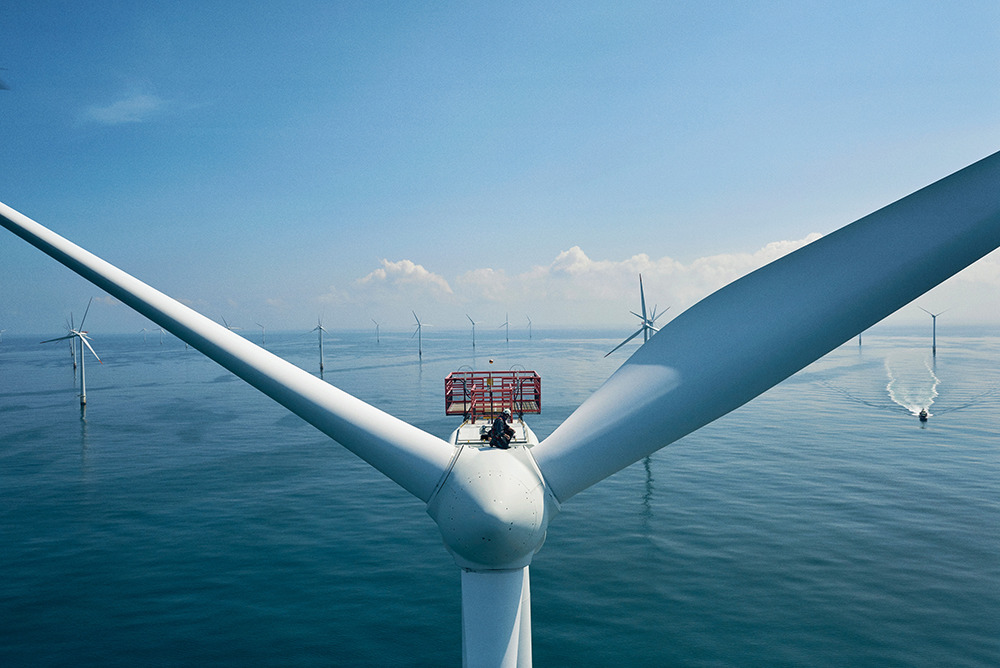Case Study: Securing a fitter future for Vattenfall’s Horns Rev 1 turbines
Miros IoT solutions ensure significant cost reductions and multiple operational benefits to new offshore wind farms. However, as demonstrated with Horns Rev 1 where the access and sharing of data can be challenging, the ability to retrofit smart technology onto existing first or second-generation infrastructure contributes significantly to a positive operational and commercial value proposition.
- Product: Miros Cloud, RangeFinder
- Market: Offshore Wind



Image: Courtesy Vattenfall: Horns Rev 1 wind farm
To download this case study, click here.
Background
Globally there are currently 9,613 fully commissioned offshore wind turbines each requiring regular monitoring and maintenance to ensure optimum operational integrity and longevity if they are to play their part in carbon neutrality goals.
Europe contributes to 60% of these operational turbines offshore today. Vattenfall’s Horns Rev 1, offshore Denmark, boasts 80 turbines and as the first large-scale offshore wind farm in the world, is now 20 years old.
Innovative technology and easy access to real-time and historical data are essential to understand the health status of these ageing turbines and to know when to administer preventative or protective measures. This is the cornerstone of reducing operational costs.
The Challenge
Offshore access and operational planning decisions are typically made using weather forecasts which are largely based on hindcast models with coarse grids and limited availability of high-quality, real-time data.
In 2019, Miros began working with the operational team of Vattenfall’s Horns Rev 1 which had experienced difficulties with its wave buoy and was becoming disillusioned with the traditional wave and weather forecasting provided by metocean vendors.
Data accessibility and the means to share real-time, accurate data with many stakeholders, including vendors and employees, within a safe and secure system, was also an issue and was hampering critical decision-making on necessary O&M, as well as a planned life extension activity.
The Solution
Miros installed five self-calibrating wave radars, RangeFinders, plus one standalone multiparameter weather sensor at strategic points across the site. This was to enable more efficient day-to-day O&M planning as well supporting life extension plans to the end of this decade.
The IoT sensors measure highly accurate real-time sea state and weather parameters. This as well as historical data is easily accessed through the Miros Cloud platform utilising the latest Microsoft Azure software. The data is then visualised on a client-tailored user interface which can be accessed directly by any project stakeholder anytime.
As the sensors are not submerged in water there are few maintenance requirements as the nature of the Miros cloud solution allows for remote troubleshooting and automatic software upgrades.
Having quick and easy access to real-time data also contributes to avoiding wasted or aborted vessel trips and therefore also contributes to the overall reduction of CO2 emissions.
Prior to sensor installation, analysis of the bathymetrical data, project design, layout and other environmental parameters were used to determine optimal sensor placement on the Turbines and Offshore Substation locations to provide a more precise holistic overview of the varying sea state conditions across the site, supporting safer and more efficient O&M planning and execution as well as informing a more accurate weather forecast.
The Results
The entire project team quickly realised the operational benefits and cost savings by adopting the Miros Cloud platform. The Vattenfall team is seeing a positive impact on the reduction of employee time and resources across several internal stakeholders (Site Operations, SCADA, IT, Metocean, Asset Integrity, etc.).
For example, a project manager based remotely and the operations manager at the marine operations base can simultaneously view the actual sea state conditions on-site on real-time dashboards, accessible anytime on any device. This directly impacts the decision as to when it is safe for personnel to be transported via crew transfer vessel (CTV) for conducting maintenance activities.
Vattenfall decided to take this a step further and make the data public. This facilitates easy sharing of the sea state and weather data to external stakeholders and the result has significantly reduced the need for additional internal administrative tasks associated with previous 3rd party data access requirements.
Live data from Horns Rev 1 can be seen at Miros.app
The project has proven that the combination of appropriately chosen locations to source data from and full IoT capability is vital to:
- Easy access and sharing of data to all internal and external project stakeholders simultaneously
- Facilitate real-time decision support
- Provide post-operation analyses
- Support future planning
- Deliver long-term asset integrity calculation
The Value
On a typical modern offshore wind site (~500MW to 1GW scale) hosting multiple Miros sensors, offshore wind OPEX modelling undertaken by the University of Strathclyde has shown an OPEX saving between GBP300k-GBP1million and a reduction of 5% CO2 emissions per annum.1
Miros IoT solutions ensure significant cost reductions and multiple operational benefits to new offshore wind farms. However, as demonstrated with Horns Rev 1 where the access and sharing of data can be challenging, the ability to retrofit smart technology onto existing first or second-generation infrastructure contributes significantly to a positive operational and commercial value proposition.
To download this case study, click here.
Read our corresponding article “Breathing new life into ageing wind farms“.


